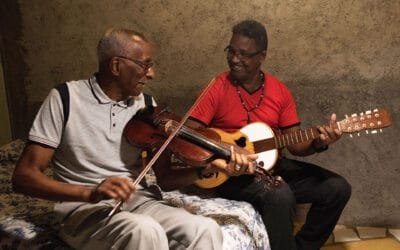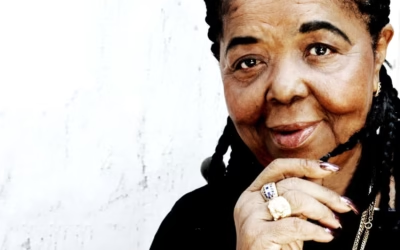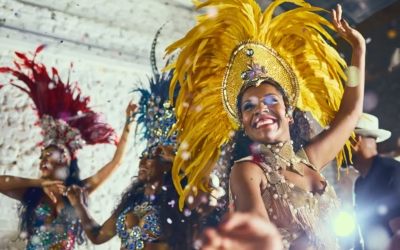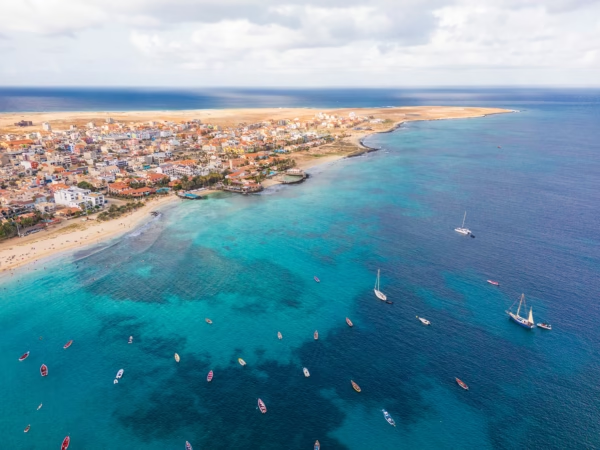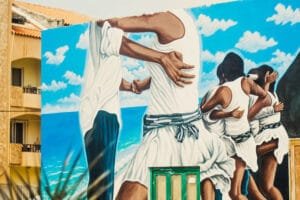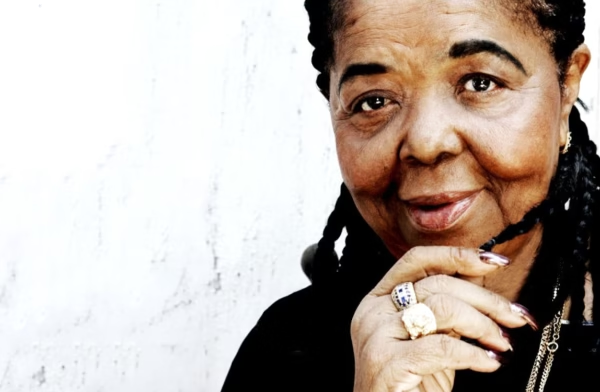Coladeira: Nothing Can Stop The Great Joy of Living
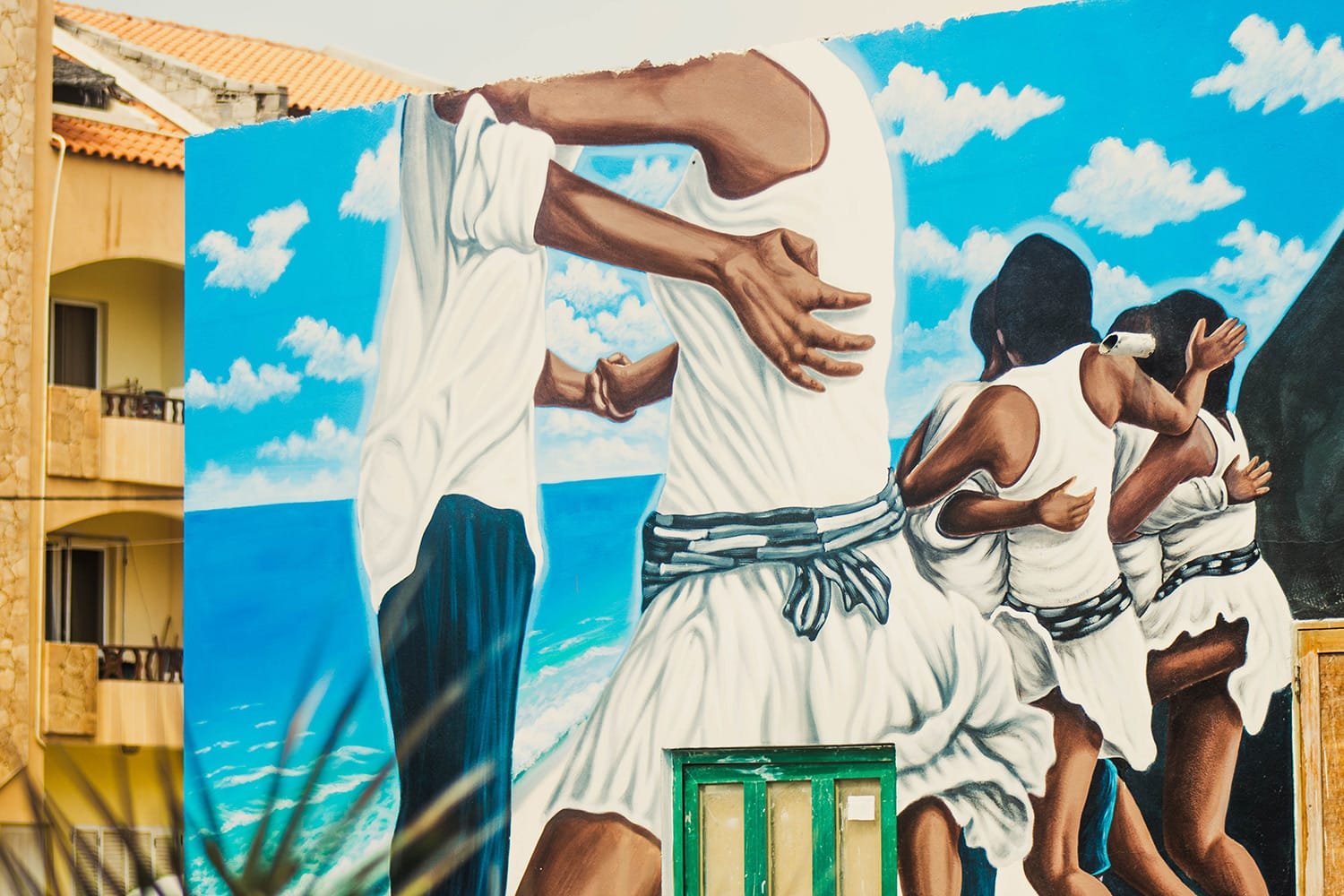
From the crowd, someone shouts: “Já Bocê v’rá-l n’um coladêra!” — “You’ve turned it into a coladeira!” The term, initially referring to the festive act of going out to sing colá, suddenly takes on new meaning. In that spontaneous moment of musical rebellion, one of Cape Verde’s most beloved genres is born.
From Sorrow to Celebration: The Musical Revolution
While morna captures the soul’s deepest yearnings, coladeira embodies the flip side of Cape Verdean emotion: the resilience transformed into rhythm, hardship transmuted into humour. Where morna weeps, coladeira laughs. Where morna contemplates, coladeira dances.
This transformation wasn’t merely musical; it was cultural rebellion wrapped in melody. The original themes of Boa Vista’s early mornas — satire, social criticism, playful jibes at authority — found their perfect vehicle in coladeira’s quickened pulse. These themes echo the medieval Portuguese cantigas de escárnio e maldizer (songs of mockery and cursing), but filtered through the unique lens of Cape Verdean creole culture, they became something entirely new: a form of resistance that moved people’s feet even as it moved their minds.
The Architecture of Joy: Understanding Coladeira’s Musical DNA
The Rhythmic Heart
At its core, coladeira pulses with a 2-beat bar, but within this seemingly simple framework lies remarkable complexity. The tempo varies dramatically — from a leisurely andante that barely distinguishes itself from a slow morna, to an exuberant allegro that sets dance floors ablaze. Traditional coladeira follows a harmonic structure based on a cycle of fifths, a direct inheritance from its morna parentage, though contemporary composers increasingly experiment beyond these boundaries.
The guitar technique known locally as mãozada forms coladeira’s rhythmic backbone. The thumb marks the bass notes on the beats while the fingers execute syncopated chord patterns, creating a conversation between low and high, steady and surprising. This interplay generates coladeira’s characteristic swing — not the swing of American jazz, but something uniquely Cape Verdean. This sway seems to mirror the Atlantic waves lapping at the archipelago’s volcanic shores.
Traditional Instrumentation of Coladeira and Its Evolution
A traditional coladeira ensemble usually includes:
- The violão (guitar) for both rhythm and a harmonic foundation.
- The cavaquinho, with percussive strumming, adds nice, textural complexity.
- Solo instruments like the rabeca (violin), clarinet, or trumpet – weave melodies.
- Percussion instruments: from simple shakers and güiros to more elaborate setups.
The 1960s brought electrification. Drum kits replaced traditional percussion, electric guitars and bass guitars entered the mix, and by the 1980s, synthesisers and drum machines had joined the party. This evolution sparked some heated debates between genre purists and progressives. It created a tension that actually continues to animate Cape Verdean music to this day. The late 1990s witnessed a “return to roots” movement, with unplugged performances regaining popularity, suggesting that coladeira, like all living traditions, moves in cycles.
Two Coladeira Schools, Many Voices and Regional Variations
As coladeira spread from São Vicente across the archipelago, it developed distinct regional flavours. Two major schools emerged: the Barlavento school centred in Mindelo, and the Sotavento school based in Praia. Each island added its own seasoning to the basic recipe. In Brava, where the genre took the longest to establish itself, locals refer to it as colinha. Santiago’s musicians blend it with finaçon, while Fogo contributes elements of curcutiçon.
The 1950s saw the emergence of two contrasting styles that would shape coladeira’s evolution. The “Ti Goy style” favoured a slower, more moderate tempo with simpler melodic lines and sardonic lyrics. The “Tony Marques style” evolved toward faster allegro tempos. It featured richer chord progressions and more varied themes. However, these approaches eventually cross-pollinated, creating the diverse soundscape of modern coladeira.
Dancing Through History: Coladeira as Social Expression
The Dance of Connection
As a dance, coladeira is democracy in motion. Partners embrace with one arm while holding hands with the other, their bodies swaying in synchronised waves that mark the rhythm’s beats. The basic footwork — a side-tap, side-tap pattern with weight shifts — appears simple, but skilled dancers layer it with shoulder undulations and hip movements that transform the basic into the sublime.
The dance emerged in the endless tocatinas of São Vicente. Where some marathon dance sessions could easily stretch until sunrise. When dancers grew weary of morna’s melancholic embrace, they’d call for the musicians to add contratempo — a backbeat that would reinvigorate tired feet. This transition gave birth to estrimbolca, a transitional dance style characterised by quick, measured steps that bridged morna and coladeira.
From Living Rooms to World Stages
The journey from Mindelo’s intimate gatherings to international recognition parallels Cape Verde’s own story of cultural resilience. While Cesária Évora made morna a global phenomenon with her barefoot performances and smoky voice, she never forgot coladeira. Her concerts skillfully wove between the two genres, using coladeira’s upbeat energy to lift audiences from morna’s beautiful melancholy. Some say that songs like “Sodade,” though most often classified as morna, actually demonstrate the slow coladeira variant. It shows how delicate the difference can be between these two genres.

Coladeira’s Brazilian Cousin: Samba
Coladeira’s evolution cannot be understood without noticing its ongoing dialogue with Brazilian music. From its earliest days, it absorbed influences from samba and, later, also from bossa nova. This wasn’t mere imitation, tho, but a creative adaptation. Where bossa nova emerged from Rio’s middle-class neighbourhoods as samba’s sophisticated offspring, coladeira developed as morna’s rebellious child, maintaining its working-class credentials even as it incorporated jazz harmonies and Brazilian rhythms.
The influence flows both ways. The samba-canção and bossa nova elements that coladeira absorbed in the 1960s were transformed by Cape Verdean sensibilities, creating variants like slow coladeira (sometimes called toada or contratempo). These hybrid forms demonstrate how musical genres, like the people who make them, are enriched by cultural exchange rather than diminished by it.
The Zouk Revolution: Tradition Meets Modernity
The 1980s brought seismic change via zouk, the dance music of the French Antilles. The similarities were uncanny — island nations with creole languages, mixed populations, and histories shaped by colonialism and slavery. Zouk’s electronic production and infectious rhythms resonated powerfully with younger Cape Verdeans, particularly those in the diaspora.
This influence gave rise to numerous variants, for instance: cola-zouk, cabo-swing, and cabo-love. And, obviously, genre purists decried the commercialisation and trivialization of traditional coladeira. When, on the other hand, progressives celebrated the genre’s continued evolution. Suzanna Lubrano, among other artists, embodies this fusion, creating music that honours tradition while embracing contemporary production techniques.
Masters of the Form: The Voices That Define Coladeira
The Pioneers and Preservers
The pantheon of coladeira masters reads like a who’s who of Cape Verdean music. Bana, whose recordings from the mid-20th century helped codify the genre’s classic sound. Paulino Vieira, whose album “Cabo Verde, Poema Tropical” captured coladeira at its most poetic. Mité Costa, who brought theatrical flair to her performances, understands that coladeira is as much about presence as it is about voice.
The Contemporary Voices
Nancy Vieira was born in Guinea-Bissau to Cape Verdean parents and raised between Boa Vista and Lisbon, with a biography that reflects the diasporic experience that shapes modern Cape Verdean identity. Her discography nicely represents coladeira’s contemporary evolution. Her album, titled “Gente” (People), exemplifies how coladeira continues to evolve, incorporating influences from across the Lusophone world while maintaining its essential Cape Verdean character.
The band Simentera took a different approach, using traditional acoustic instruments to reimagine coladeira for the world music market. Their mission went beyond performance. They sought to create infrastructure for Cape Verdean music, establishing cultural centres and music schools to ensure the tradition’s continuation.
The Next Generation
Artists like Djodje, Gilyto, and Mayra Andrade represent coladeira’s future, artists who grew up with both traditional forms and global pop music. They navigate between acoustic authenticity and electronic innovation, local themes and universal concerns, creating music that can be appreciated by Cape Verdeans from the islands and from diasporas, as well as the listeners around the world, no matter the age.
Coladeira in the Digital Age: Preservation and Innovation
The 21st century has brought both challenges and opportunities for coladeira. Streaming platforms make Cape Verdean music accessible worldwide, but they also threaten to homogenise its distinctive characteristics. The Cape Verde Music Awards, established in 2011, includes a Best Coladeira category, institutionally recognising the genre’s continued relevance.
Young producers in Praia and Mindelo experiment with trap beats under coladeira melodies. DJs in Lisbon’s Cape Verdean neighbourhoods blend traditional coladeira with Afrobeat and contemporary R&B. These experiments sometimes fail to succeed. However, they represent the genre’s vitality — a music still alive enough to risk transformation.
The Language of Resistance: Coladeira’s Lyrical Legacy
While coladeira’s rhythm makes bodies move, its lyrics move minds. The genre’s satirical tradition serves as a safety valve for social criticism, enabling Cape Verdeans to address corruption, inequality, and injustice through humour and metaphor. During the colonial period, coladeira lyrics employed elaborate codes and double meanings to evade Portuguese censorship.
Independence in 1975 didn’t end this tradition. If anything, it enriched it. Coladeira became a tool for nation-building, its lyrics exploring what it means to be Cape Verdean in a globalised world. Songs address everything from political scandals to romantic betrayals, from the price of rice to the pain of emigration, always with the genre’s characteristic blend of humour and heart.
The Dance Goes On: Coladeira’s Enduring Appeal
What makes coladeira endure? I’d say it’s the genre’s fundamental optimism, the beautiful insistence that even in hardship, there’s always a reason to dance, and, also, the great flexibility and ability to absorb influences without losing its essential character. And, most likely because coladeira captures something important about the Cape Verdean spirit — the ability to transform limitation into creativity, isolation into identity, and sorrow into celebration.
In the dance halls of Mindelo, the house parties of Praia, the Cape Verdean social clubs of Rotterdam and Providence, coladeira continues to evolve. Each generation adds a bit of something new. That way, they ensure that what began as Anton’ Tchitch’s playful morna adaptation remains a beautiful, living expression of Cape Verdean spirit.
Experiencing Coladeira: The Guide
Essential Recordings
For those new to coladeira, specific recordings serve as good entry points to the genre:
- Traditional coladeira: “Cabo Verde em Serenata” compilation with Simentera’s interpretations of classic compositions;
- Contemporary evolution: “Manhã Florida” and “Gente” by Nancy Vieira, showcasing modern coladeira’s sophistication;
- Fusion exploration: Suzanna Lubrano’s cola-zouk’s commercial appeal;
- Live experience: any live recording from Cape Verdean festivals captures coladeira’s communal energy.
Understanding the Rhythm
To truly appreciate coladeira, listen for:
- The interplay between bass and treble in the guitar’s mãozada
- The moment where vocals ride slightly behind or ahead of the beat, creating tension and release
- The call-and-response between solo instruments and ensemble
- The subtle variations in tempo that skilled musicians employ to build energy
Learning the Dance
If you search, you’ll find many YouTube tutorials. However, coladeira is best learned in a community. Seek out Cape Verdean cultural associations, which exist in most cities with significant Cape Verdean populations. The basic step may be simple, but the feeling — that particular sway that makes coladeira unmistakable — comes only through practice and cultural immersion.
Coladeira: The Beat That Binds
Coladeira is more than music. It’s a philosophy rendered in rhythm. It acknowledges life’s difficulties. However, at the same time, it refuses to be defeated by them. It honours tradition and embraces change. Coladeira affirms that joy is not the absence of struggle, but the decision to dance anyway.
As Cape Verde continues its journey in the 21st century — grappling with the ongoing negotiation between tradition and modernity — coladeira remains a constant. It adapts, evolves, sometimes disappears underground only to reemerge transformed, but always recognisable. The music that began when Anton’ Tchitch decided to play a morna just a little bit faster has become a testament to the transformative power of rhythm, the resilience of culture, and the universal human need to turn sorrow into song, struggle into dance, existence into celebration.
In the words often heard at Cape Verdean gatherings: “Nos música é nos vida” — our music is our life. And in that life, coladeira plays on, inviting everyone to join the dance that never truly ends, only pauses between songs, waiting for the next beat to begin.
Bibliography
- Mornas e Contra-Tempos (Coladeiras de Cabo Verde), J. Monteiro, Ed. do Autor, Mindelo, 1987;
- A dança do landu (Dos antigos reinos do Kongo e de Ngola à Boa Vista), A. G. Lima;
- Breves Apontamentos sobre as Formas Musicais existentes em Cabo Verde (PDF), Margarida Brito (1998);
- Les musiques du Cap-Vert, Chandeigne, Vladimir Monteiro, Paris, 1998, p. 75
- Music of Cape Verde and Coladeira on Wikipedia;
- Cape Verde: Music, Portuguese Historical Museum.
